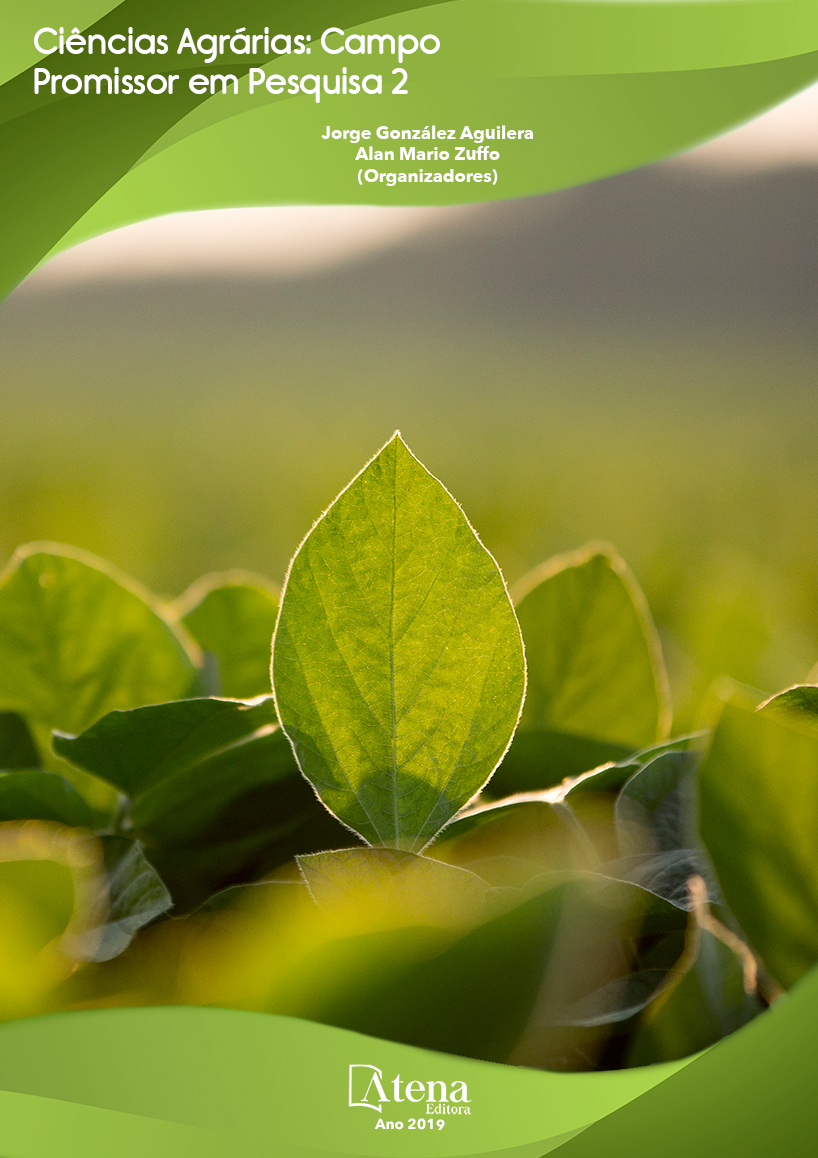
DEFICIÊNCIA NUTRICIONAL DE MICRONUTRIENTES POR OMISSÃO DO ELEMENTO NA CULTURA DO MILHO
Objetivou-se visualizar os sintomas
de deficiência dos micronutrientes, B (boro) e
Zn (zinco) e seus efeitos, no estado nutricional
do milho. Este estudo foi conduzido na Fazenda
Experimental da Universidade do Estado de
Minas Gerais (UEMG) unidade Passos, Minas
Gerias, Brasil. O delineamento experimental
foi em blocos casualizados com 4 tratamentos,
4 repetições, sendo: T1- Solução completa
(Solução de Hoagland e Arnon); T2 - Solução
completa com omissão de B; T3 - Solução
completa com omissão de Zn; T4 - Ausência
total de nutrientes, totalizando 16 parcelas
experimentais. Colocou-se a areia lavada (com
ácido muriático) em vasos com capacidade
de 6 litros. Após o enchimento dos vasos, a
areia foi molhada com água deionizada, até a
atingir a capacidade de campo. Foi realizado
a semeadura, distribuindo-se 10 sementes por
vaso. A germinação das sementes ocorreu no
5º dia após a semeadura. Após o desbaste,
iniciou-se o fornecimento de solução nutritiva,
até aos 43 dias após a emergência (DAE) das
plantas. A colheita das plantas foi realizada após
43 dias da emergência. Separou-se as frações
raiz, colmo e folhas para determinação teor de
nutrientes e os resultados foram submetidos a
análise variância e as médias comparadas pelo
teste Scott- Knott, a 5% probabilidade, com
auxílio do programa computacional SISVAR.
Com a omissão de micronutrientes, identificouse
visualmente a deficiência dos elementos Zn
e B. O micronutriente zinco apresentou maior
acúmulo tanto na fração raiz quanto na planta
inteira, tendo o tratamento completo diferido
significativamente dos demais tratamentos.
DEFICIÊNCIA NUTRICIONAL DE MICRONUTRIENTES POR OMISSÃO DO ELEMENTO NA CULTURA DO MILHO
-
DOI: 10.22533/at.ed.16019200611
-
Palavras-chave: Acúmulo, Boro, Germinação de sementes, Teor, Zinco
-
Keywords: Accumulation, Boron, Seed germination, Content, Zinc
-
Abstract:
The objective of this study was to visualize the symptoms of micronutrient
deficiency, B (boron) and Zn (zinc) and its effects, on the nutritional status of maize. This
study was conducted at the Experimental Farm of the State University of Minas Gerais
(UEMG), Passos, Minas Gerias, Brazil. The experimental design was in a randomized
block with 4 treatments, 4 replicates, being: T1- Complete solution (Hoagland and
Arnon solution); T2 - Complete solution with omission of B; T3 - Complete solution
with omission of Zn; T4 - Total absence of nutrients, totaling 16 experimental plots. The
washed sand (with muriatic acid) was placed in pots with a capacity of 6 liters. After filling
the vessels, the sand was wetted with deionized water until reaching the field capacity.
Seeding was carried out, with 10 seeds distributed per pot. Seed germination occurred
on the 5th day after sowing. After thinning, the nutrient solution was started up to 43
days after emergence (DAE) of the plants. The plants were harvested after 43 days
of emergence. The root, stem and leaves fractions were separated for determination
of nutrient content and the results were submitted to analysis variance and the means
were compared by the Scott-Knott test, 5% probability, with the aid of the SISVAR
computer program. With the omission of micronutrients, the deficiency of the elements
Zn and B was visually identified. The zinc micronutrient presented greater accumulation
in both the root and whole plant fractions, and the complete treatment was significantly
different from the other treatments.
-
Número de páginas: 15
- José de Arruda Barbosa
- Gabriela Mourão de Almeida
- Antônio Michael Pereira Bertino
- Evandro Freire Lemos
- Thayane Leonel Alves


